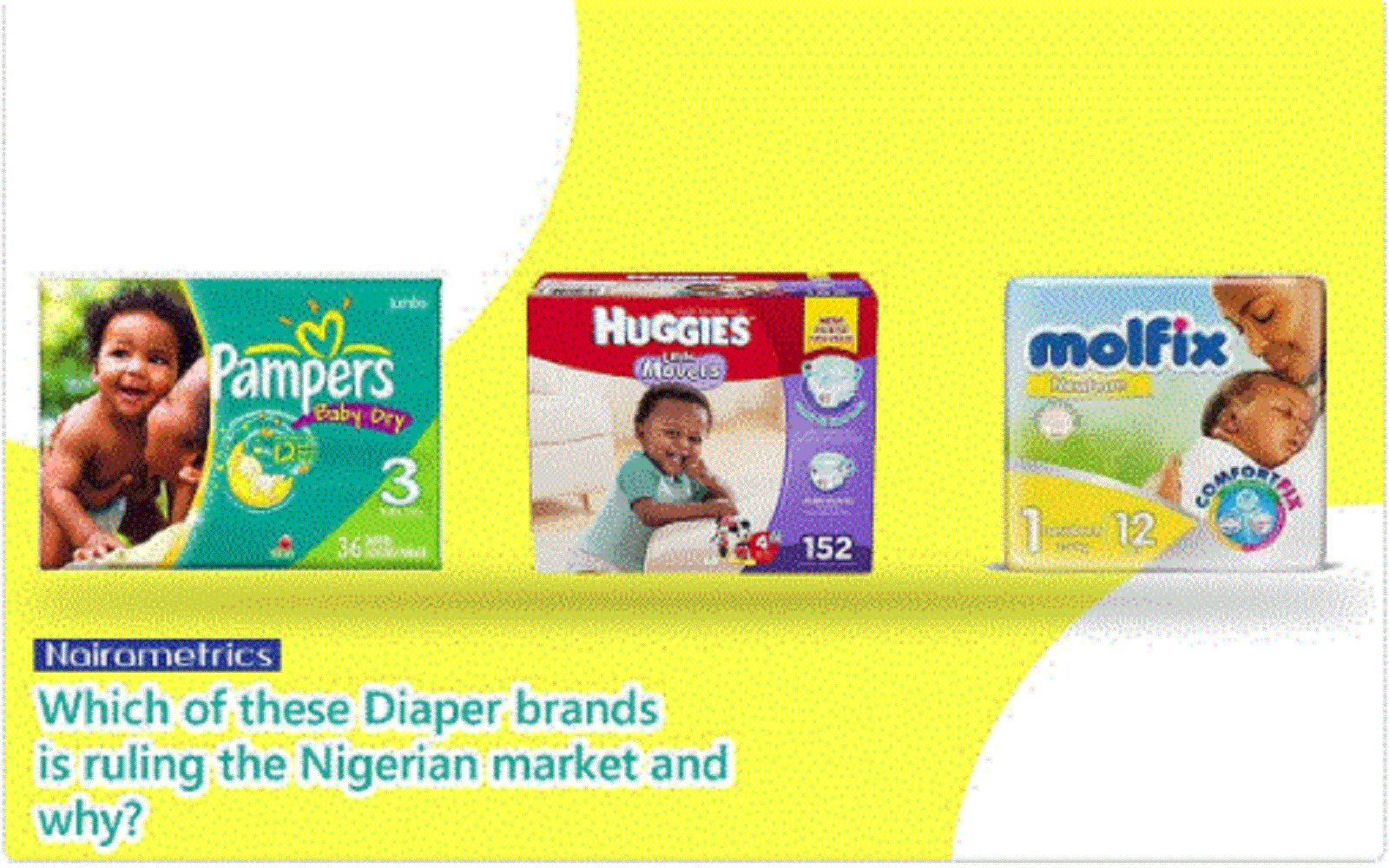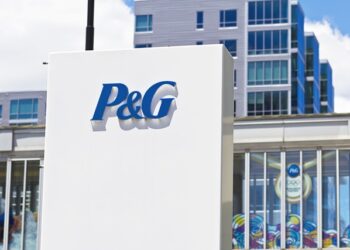In recent times there has been a paradigm shift from the use of cloth diapers to disposable diapers among nursing mothers in the country.
This is as a result of hygiene concerns and the convenience it brings for the modern woman, especially working mothers. With this occurrence, the diaper segment in Nigeria’s FMCG industry has become a major profit-making business.
Currently, the Nigerian diaper market has over 15 brands, with each jostling for market share across the country. While some have emerged top-of-mind brands with a national spread, some are confined to regional play. The stiff competition has also forced some to shut down parts of their operations and re-strategize.
For our product review this week, we take a look at how different diaper brands are adapting and competing for the leadership position, once enjoyed by the pioneer brand, in a race for market share and profitability.
A market where Pampers once reigned supreme
Pampers is the first diaper brand ever produced and marketed in the country. The product made its entry into the Nigerian market in 2000, and over the years, the brand has gone through various transformations and brand extensions.
For over a decade, the brand controlled the most market share in the country. But, the entry of new brands, led by Molfix, into the Nigerian market has brought new dynamics into the race for market share.
In response to the threat posed by the new entrants, and in a bid to increase patronage, Pampers manufacturer, Procter & Gamble (P&G), added Pampers Baby Dry and Pampers Premium to the product portfolio. The company also commissioned a $300 million industrial plant in Agbara, Ogun State.
In an unexpected turn of events, Nigerians woke up to the news that P&G had decided to shut down its plant in Agbara. While many attributed the closure to the inability of the company to cope with the growing competition in the market, management of the company said that it was part of its restructuring exercise in its Nigerian operations. An assurance was given that it would continue to operate in the country, albeit from its Ibadan plant only.
However, a senior staff of the company confirmed to Nairametrics that from next year, Pampers will be imported into the country, while the Ibadan plant, which is majorly for detergent production, remains unaffected by the new restructuring.
Many also accused the company of not doing enough in investing in the local production of its raw materials as the company still depends largely on importation for them. This has exposed the company to fluctuations in the foreign exchange market.
These macroeconomic challenges and lapses in its product segments have created a gap which has been readily filled by the new entrants.
Molfix in the market mix
Molfix, a diaper brand produced by Hayat Kimya Nigeria Ltd, is designed to give “babies full protection and keeps their skins dry and healthy around the clock”.
Hayat Kimya, which started producing Molfix baby diapers in Turkey since 1987, presently has production plants in Algeria, Iran, and Egypt.
In an effort to boost its market penetration, manufacturers of the Molfix brand adopted a lower pricing regime which makes it affordable for the struggling middle-class group. It also has a strong distribution channel throughout all retail chains in both rural and urban areas, which makes it easily accessible.
To be able to challenge the Pampers brand, Molfix invested $100 million in constructing an ultra-modern diaper/tissue factory in Agbara Industrial Layout, Ogun State.
In terms of price strategy, Molfix is doing well in offering lower prices for quality products, while investing in backward integration to cut costs. With the company generating its own power, the cost of production is lower and there is more control over pricing.
Huggies in the market mix
Another big player in the market is the Huggies brand from the stables of Kimberly-Clark, an American multinational personal care company. The brand sells intrinsic value, driving a unique proposition that goes beyond form and functionality.
For makers of Huggies, functionality is the basics, while the “feeling” is the product. Huggies sells “self-esteem” to moms as a product and because of this, those who use Huggies have so much loyalty and affinity for the brand and they are always proud to show off the diapers at every opportunity.
The brand does not seem interested in controlling the market share, as its target is a segment of the market where it applies a strategic profiling aimed at middle-upper class, business-professional moms.
The Huggies brand is focused on gaining the wallet share, rather than market share. The concept is “having 100 percent of few pockets rather than having one percent of many households”.
…and the rest
The performance of other smaller brands in the country is hampered by the strong competition from the leading brands such as Molfix, Pampers, and Huggies, and weak distribution channels. Also, brands such as Dr. Browns, and Sunfree experience frequent stock-outs, as their availability is solely dependent on the vagaries of importation policies.
Promotions and price wars
Manufacturers of diapers in the country have taken a robust approach in an attempt to maintain market share and boost sales in a harsh economic climate like Nigeria, with each making efforts to secure higher patronage. It is not uncommon for them to offer promotional discounts to distributors to help boost sales.
In the first half of the year, Hayat Kimya, makers of Molfix, offered distributors a 10% discount across all products and an extra 3% when they exceeded a certain sales level. P&G initially ran a ‘buy 15 get two free’ promotion, which was later lowered to ‘buy 20 bundles get one free’. This resulted in further brand discounts offered mid-year: 4.5% discount by P&G and 9% by Hayat.
Brand owners are also entering into special partnership agreements with hospitals, selling diapers to them at lower prices.
What consumers are saying
Mrs. Esther Udoh, a nursing mother who spoke with Nairametrics, noted that the diaper market is already saturated but the known brands are still holding on to their shares of the market. She noted that Pampers cannot be ignored as its name stands as a colossus in the market, and will do so for more years to come. To her, the brand would have been a clear winner if not for the entries of Molfix and Huggies.
Prince and princess is my best. It's flat, not as thick as molfix. Based on your pool, molfix is first, pampers is second, Huggies is worst
— Emem Amanam (@EmemAmanam) July 24, 2018
@Molfix is leading regardless of the outcome of this vote. Why? Same quality as the others. Lower costs than the others. Why pay more for the same quality?
— Lassie (@NaijaGoldaMeir) July 24, 2018
I don't know the reason but I know my wife prefer molfix to other diapers.
— Jaywonderoflife (@juwantojuwonlo) July 24, 2018
In a product review done on our social media platforms, respondents mentioned factors that were considered when choosing diaper brands. Many stated that the reaction of a baby’s skin to these products was the most important factor when it came to choosing a brand; some cause nasty rashes and make babies uncomfortable.
Product affordability was another factor to be considered when deciding on a diaper brand.
The verdict
In a poll conducted by Nairametrics, Pampers brand got 38% of the votes, Molfix got 36%, while Huggies got 26%.

No doubt, the new entrants are aiming for the leadership role in the market and are doing everything possible to challenge the dominance of Pampers.
For this week’s battle, Pampers is the winner. However, for a leader to protect its position against challengers, it requires innovation, price cuts, expansion of its distribution channel, and intense promotional efforts. The manufacturers of Pampers have to double down on their efforts or lose patronage to competition.






















I want to be a distributor of molfix pampers